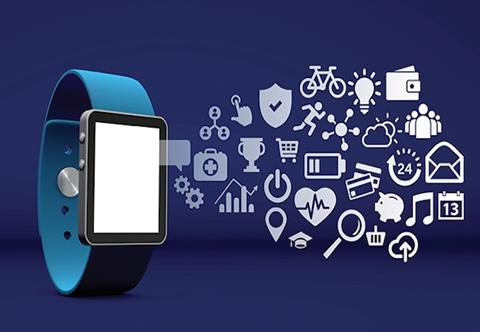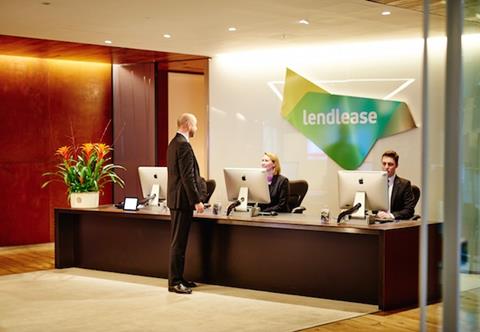
Need to know:
- Wearable technology should be fully incorporated into a health and wellbeing strategy rather than purchased to be used as a standalone perk.
- Wearable devices can support employees’ mental wellbeing, as well as their physical health.
- Technology is evolving to provide detailed analytics data.
Wearable technology has revolutionised the fitness industry, with 63% of the wrist-worn wearable tech market in 2015 attributed to the sale of activity trackers, according to Mintel’s Wearable technology UK report, published in December 2015. But it remains to be seen if employers’ appetite for wearable technology will escalate into a revolution of its own as organisations strive to support and engage staff with their personal wellbeing.
Technology development
Although it has been around for a while, wearable technology is still in the early stages of development. Iain Laws, managing director of healthcare and group risk at Jelf Group, says: “Technology is developing at a rapid rate to actually provide people with support and [add] value to their day-to-day living; not just in terms of physical wellbeing, but overall wellbeing, so psychological and emotional wellbeing. In the UK, I think employers are using wearables as a visible way to engage employees with their own wellbeing and their own health, both physical and mental.”
Some predict that the use of wearable technology in health and wellbeing strategies will explode over the course of the next five years. For example, only 10-20% of his employer clients were considering the wearables market 18 months ago, says Luke Prankard, senior health and wellbeing consultant at Thomsons Online Benefits. Now, over half are looking seriously at wearable solutions to incorporate into a health and wellbeing strategy.
Implementing a strategy
Wearable technology should be embedded as an integral part of a health and wellbeing strategy, says Jelf Group’s Laws. This might involve employers actively promoting the use of such technology, and giving employees access to the aggregated data. This data can also inform an employer's approach to supporting the health of its workforce.
“What wearable technology will give an organisation is insight into the actual health and wellbeing behaviours of its population, and through those insights, [it] can then shape [its] wellbeing programme to provide the support, interventions and preventative measures to focus on the problem areas that are highlighted,” adds Laws.
Wearable trackers are not only suitable for exercise fans, the devices can, in fact, have a much wider reach, incorporating areas such as sleep, nutrition, stress, and goal management, as well as more medically-minded areas such as helping to manage diabetes and blood pressure.
For example, if employers can see, via data from wearable technology, that staff are not getting the required amounts of sleep, they can then expect higher stress levels at work, says John Dean, managing director at Punter Southall Health and Protection. With this insight, employers can then take proactive measures to support staff.
In addition to providing insights for employers, wearable technology can also increase individual awareness and prompt behaviour change. “When [an employer] gives someone wearable devices, they become aware for the first time what is going on and, of course, that changes behaviour,” says Dean.
Wearable technology could also help employees recognise and manage stress. Laws says: “Physiological strain is expected to come through as a new part of the measurements of wearables so people can understand at which points in the day they are experiencing physiological stress, how stress is good and bad, and also at what times, and what activities they’re doing during the day.
“People can understand how they can best manage resources and energy levels to ensure their emotional wellbeing and psychological wellbeing. Employers need to engage on this wider concept of wellbeing.”
Market developments
The wearable technology market is moving beyond just what is available to wear on wrists; the technology can now be put into jewellery or clipped on to belts, for example. Even practical items such as lanyards can be utilised, which can be helpful during conferences and business events.
Another developing area is artificial intelligence, which can be used for coaching, as well as providing detailed analytics data, says Nick Chatrath, chief executive officer of Coachify. “Predictive analytics [is] where [an individual] has a wearable [device] but can use it not just to chart ‘this is how well you did last week’, but also ‘given what you’ve got coming up, here are things you should try or tweak that will improve your performance’,” he explains.
The market is continually evolving; wearables are moving away from the current separate device model to a more smartphone app-based delivery method, making these more accessible for employees, says Punter Southall’s Dean.
Organisations will also need to consider how employees view and interact with wearable technology, particularly in light of changing demographics in the workforce. “Certainly in the next three to five years, [millennials will] be the largest proportion of the workforce and in that kind of generation group, we are seeing that wearable technology and trackers and social interaction [are] much more readily used and employees are wanting to engage in that space with their colleagues and peers,” says Thomsons Online Benefits’ Prankard.
Wearable technology is only just starting to be fully utilised and explored as a tool that can help employers really understand their workforce. The data collected can then be used to form a bespoke and personalised health and wellbeing strategy to boost employee engagement and wellbeing. A PricewaterhouseCoopers (PWC) survey, published in June 2016, found that 65% of employees would like their employer to take an active role in their health and wellbeing using technology, suggesting that wearable technology is not just a short-term fad.

Viewpoint: Wearable technology can enhance employee performance and reduce work-related stress
Wearable experiences (WE) and augmented reality (AR) can be used in combination (Wear) to provide important types of work benefit. Examples include empowering people with modest skills so they can perform at a higher level if they want to; giving people ways to explore new work and career options; improving employees’ understanding of what other jobs involve; reducing work-related stress and having more ‘say’ at work. This taps into the wish to make good choices, to be listened to. Needing to feel in control is important.
Expressed in terms of work benefits, Wear may result in opportunities for greater discretion at work or jobs with more responsibility. All of those benefits have to do with increases in the amount of discretion, influence and trust at work. They may involve small and manageable steps, which an employee may feel comfortable with.
A Wear-style approach can record a wide range of small-scale, short-duration work-based experiences in ways that can be replayed or practised on via AR, as snapshots or microcosms of unfamiliar ways of working. ‘Performance augmentation’ applications enable employees to perform at a skilled level right from the start, for example, by delegating some aspects of a task to a smart software assistant, and gradually to reduce their dependence on that assistant through practice. In that way, they can become familiar with every aspect of a task or workflow, and turn it into part of their repertoire, which they become an expert on.
Dr Paul Lefrere is director at CCA Research

Lendlease uses activity tracker loan scheme to address health hotspots
Property and infrastructure organisation Lendlease is helping employees improve their physical activity levels with the aid of an activity tracker loan scheme, which is part of its overall health and wellbeing strategy.
Baseline health checks for staff conducted in autumn 2013 produced data in 2014 that indicated Lendlease’s collective workforce was not as active as it could be, with the results flagging up weight, body mass index (BMI) and blood-pressure challenges among the workforce.
From these results, the organisation devised an activity tracker loan scheme. Gemma Bourne, head of social sustainability and the Lendlease Foundation at Lendlease, said: “We wanted to offer something that would incentivise our employees to be more active on a daily basis. We look to support the health and wellbeing of our employees and we do so by looking at what the strategic health needs or hotspots of our employee population [are]. Promoting activity came out [as] a key hotspot for us.”
Following a pilot scheme involving 50 employees, Lendlease rolled out the loan scheme to its 1,400 Europe-based employees in February 2015. From this employee pool, 900 staff members took part in the new initiative.
Employees are provided with a free Fitbit for a three-month loan period during which they also have access to an online Fitbit portal. This allows employees to create teams and compete against each other. It also lets staff members compare steps taken and active minutes with their colleagues, as well as input information such as food and water intake.
After the three-month loan period is completed, staff can either return the Fitbit or renew their loan agreement.
The scheme was promoted via internal communications such as emails, text messages, intranet messages, presentations and general word of mouth. The scheme is currently being reviewed, says Bourne. “We’ll re-launch an evolved version of that scheme; whether that evolution means a different [administration method], whether it’s targeted to teams or the loan nature of it changes with different periods of time,” she explains.











